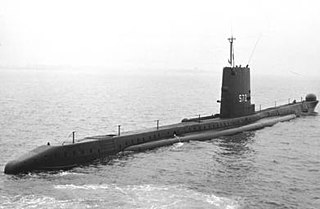
HMS Aeneas (P427) was a British Amphion-class submarine of the Royal Navy, built by Cammell Laird and launched on 9 October 1945. It was named after the hero Aeneas from Greek mythology.
HMS Alaric (P441), was an Amphion-class submarine of the Royal Navy, built by Cammell Laird laid down in May 1944 and launched 18 February 1946.

HMS Tenacious was a T-class destroyer of the Royal Navy that saw service during the Second World War. She was built by Cammell Laird, of Birkenhead and launched on 24 March 1943.
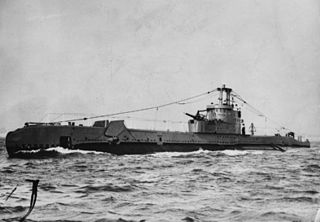
HMS Sanguine was an S-class submarine of the Royal Navy, and part of the Third Group built of that class. She was built by Cammell Laird and launched on 15 February 1945. So far she has been the only ship of the Royal Navy to bear the name Sanguine.

HMS Sea Scout was a S-class submarine of the third batch built for the Royal Navy during World War II. She survived the war and was sold for scrap in 1965.
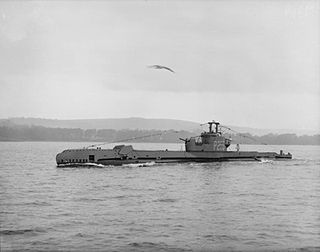
HMS Seneschal was a S-class submarine of the third batch built for the Royal Navy during World War II. She survived the war and was sold for scrap in 1965.
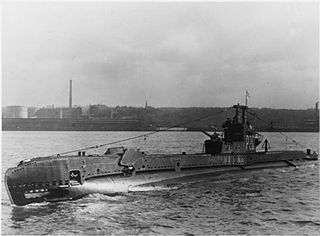
HMS Solent was a S-class submarine built by Cammell Laird and launched on 8 June 1944 of the third batch built for the Royal Navy during World War II. She spent most of her career in the Pacific Far East, often in company with her sister ship, HMS Sleuth. Together they sank fifteen Japanese sailing vessels and the Japanese auxiliary minesweeper Wa 3. She survived the war and was sold for scrap in 1961.

HMS Springer was an S-class submarine of the Royal Navy, and part of the Third Group built of that class. She was built by Cammell Laird and launched on 14 May 1945. So far, she has been the only boat of the Royal Navy to bear the name Springer.
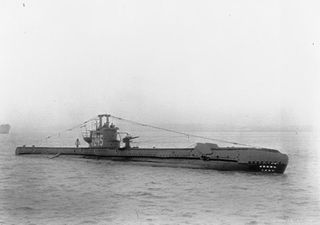
HMS Spirit was a S-class submarine of the third batch built for the Royal Navy during World War II. She survived the war and was scrapped in 1950.

HMS Stoic was a S-class submarine of the third batch built for the Royal Navy during World War II. She survived the war and was scrapped in 1950.

HMS Sea Devil was a S-class submarine of the third batch built for the Royal Navy during World War II. She survived the war and was sold for scrap in 1966.

HMS Token was a British submarine of the third group of the T class. She was built as P328 at Portsmouth Dockyard, and launched on 19 March 1943. So far she has been the only ship of the Royal Navy to bear the name Token.
HMS Test was a Laird-type River-class destroyer purchased by the Royal Navy under the 1908–1909 Naval Estimates in December 1909. Named after the River Test in southern England by the city of Southampton, she was the first ship to carry this name in the Royal Navy.
HMS Stour was a Laird-type River-class destroyer purchased by the Royal Navy under the 1908 – 1909 Naval Estimates in December 1909. Named after the River Stour in West Central England near the city of Birmingham, she was the first ship to carry this name in the Royal Navy.

HMS Arun was a Laird Type River-class destroyer ordered by the Royal Navy under the 1902–1903 Naval Estimates. Named after the River Arun in southern England she was the first ship to carry this name in the Royal Navy.
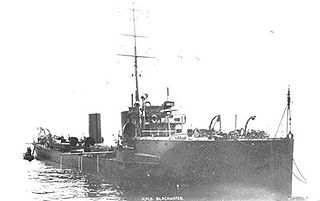
HMS Blackwater was a Laird-type River-class destroyer ordered by the Royal Navy under the 1902–1903 Naval Estimates. Named after the River Blackwater in southern England near London she was the first ship to carry this name in the Royal Navy.
HMS Foyle was a Laird-type River-class destroyer ordered by the Royal Navy under the 1902–1903 Naval Estimates. Named after the River Foyle in Ireland, she was the first ship to carry this name in the Royal Navy.
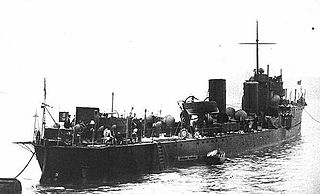
HMS Itchen was a Laird-type River-class destroyer ordered by the Royal Navy under the 1901–1902 Naval Estimates. Named after the River Itchen in southern England near Southampton, she was the first ship to carry this name in the Royal Navy.
HMS Liffey was a Laird-type River-class destroyer ordered by the Royal Navy under the 1903 – 1904 Naval Estimates. Named after the River Liffey flowing through Dublin, she was the third and final ship to carry this name since it was introduced in 1813 for a 50-gun 4th rate sold in 1827.
HMS Moy was a Laird Type River-class destroyer of the Royal Navy. Named after the River Moy in Ireland, she was the first ship to carry this name in the Royal Navy.















